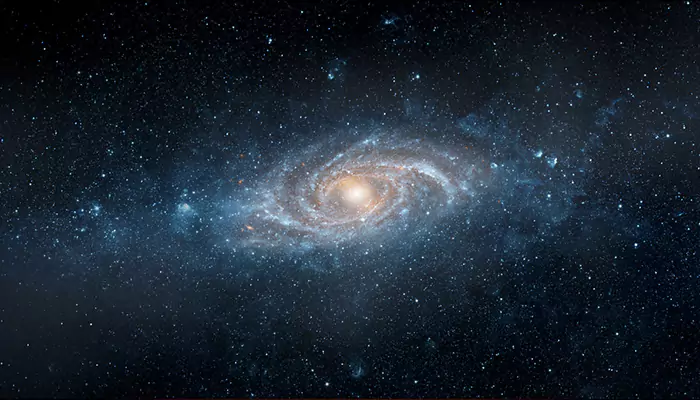Dark Matter and Dark Energy: Unseen Forces Shaping the Universe
Hey there, space enthusiasts! Have you ever wondered about the hidden forces that shape our vast universe?
- Orna Ghosh
- 12 March, 2025
- 2 mins ago

Dark Matter and Dark Energy: Unseen Forces Shaping the Universe
Hey there, space enthusiasts! Have you ever wondered about the hidden forces that shape our vast universe?
Picture the universe as a colossal dance floor, galaxies swaying to the rhythm of cosmic forces, and at the heart of this celestial soiree, dark matter and dark energy take centre stage. It's not your average star-studded spectacle; it's a mysterious dance where the lead dancers remain hidden, yet their influence is profound.
Dark matter, our first cosmic superhero, is like the invisible partner in this grand cosmic tango. As galaxies twirl and pirouette, dark matter exerts its gravitational pull, orchestrating the elegant choreography of the cosmos. Without it, the cosmic dance would be chaos, a celestial cacophony. We can't see dark matter with our telescopes- it's elusive, slipping through the fingers of detection- but we feel its gravitational embrace in the harmonious motion of galaxies, an unseen force shaping the vast cosmic ballroom.
Enter dark energy, the second enigmatic dancer in this cosmic waltz. Unlike dark matter's subtle gravitational pull, dark energy is the wild card that disrupts the cosmic status quo. It's the unseen hand pushing galaxies away from each other, causing the universe to expand at an accelerated pace. Dark energy is the cosmic breath that inflates the universe like an ever-expanding balloon, a force working against gravity in this intricate cosmic ballet.
So, as you settle in with your cosmic popcorn, recognize that beyond the shimmering stars and swirling galaxies, there's a hidden dance floor where dark matter and dark energy sway and spin, shaping the very fabric of the universe. It's a dance of the unseen, a cosmic mystery waiting to be unravelled by the curious minds peering into the depths of space.
Understanding Dark Matter
Imagine you're at a galactic dance party, and everyone grooves to the cosmic beat. Now, picture dark matter as the mysterious partner in this celestial dance. Dark matter is a hypothetical form of matter that doesn't interact with light or other electromagnetic radiation, making it invisible to our telescopes. Scientists estimate that dark matter constitutes about 27% of the universe. Its gravitational pull is like an invisible hand guiding the motion of galaxies. Without it, galaxies would fly apart, and the cosmic dance floor would be chaos.
The Enigmatic Dark Energy
As if dark matter wasn't puzzling enough, enter dark energy- the force responsible for the expansion of the universe. Picture the universe as a cosmic balloon and dark energy as the mysterious breath, causing it to inflate faster and faster. Unlike dark matter, dark energy works in opposition to gravity, pushing galaxies away from each other. Scientists believe dark energy makes up around 68% of the universe, making it the dominant player in the cosmic orchestra. The real head-scratcher? We have no clue what dark energy is made of, making it one of the most perplexing mysteries in astrophysics.
Impact on the Cosmos
You must be wondering, "Why should I care about these invisible cosmic influencers?" Well, understanding dark matter and dark energy is crucial for comprehending the past, present, and future of the universe. Their presence shapes the structure of galaxies, influences the fate of the cosmos, and challenges our fundamental understanding of physics. It's like piecing together the ultimate cosmic puzzle that holds the key to the very fabric of our existence.
So, there you have it- dark matter and dark energy, the unseen forces that choreograph the cosmic dance. As scientists continue to unravel their mysteries, we're getting closer to understanding the intricate workings of the universe. Next time you gaze at the stars, remember that beyond the visible spectacle, these invisible forces are the cosmic conductors orchestrating the grand symphony of the cosmos.










